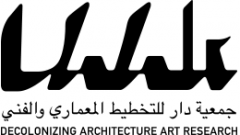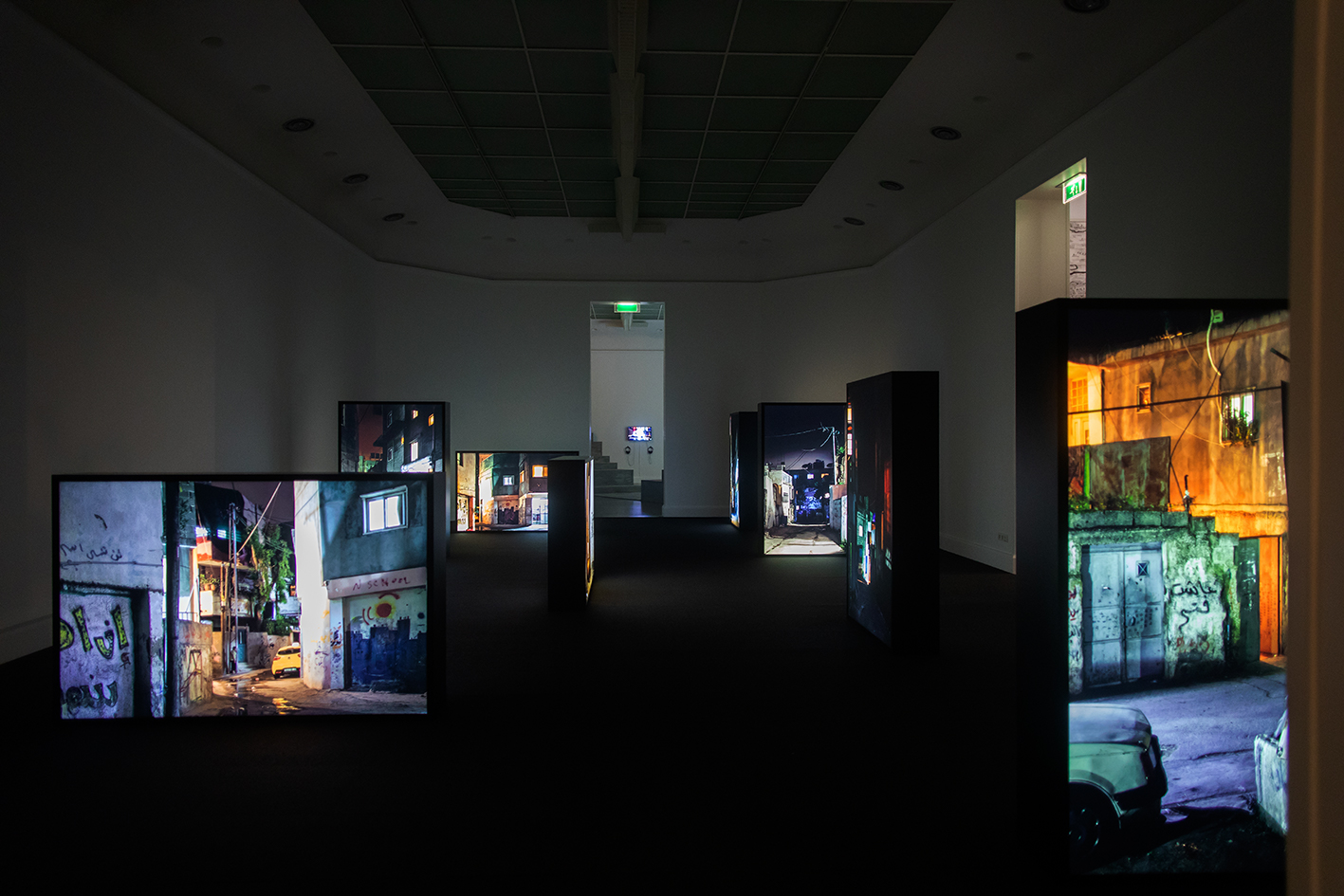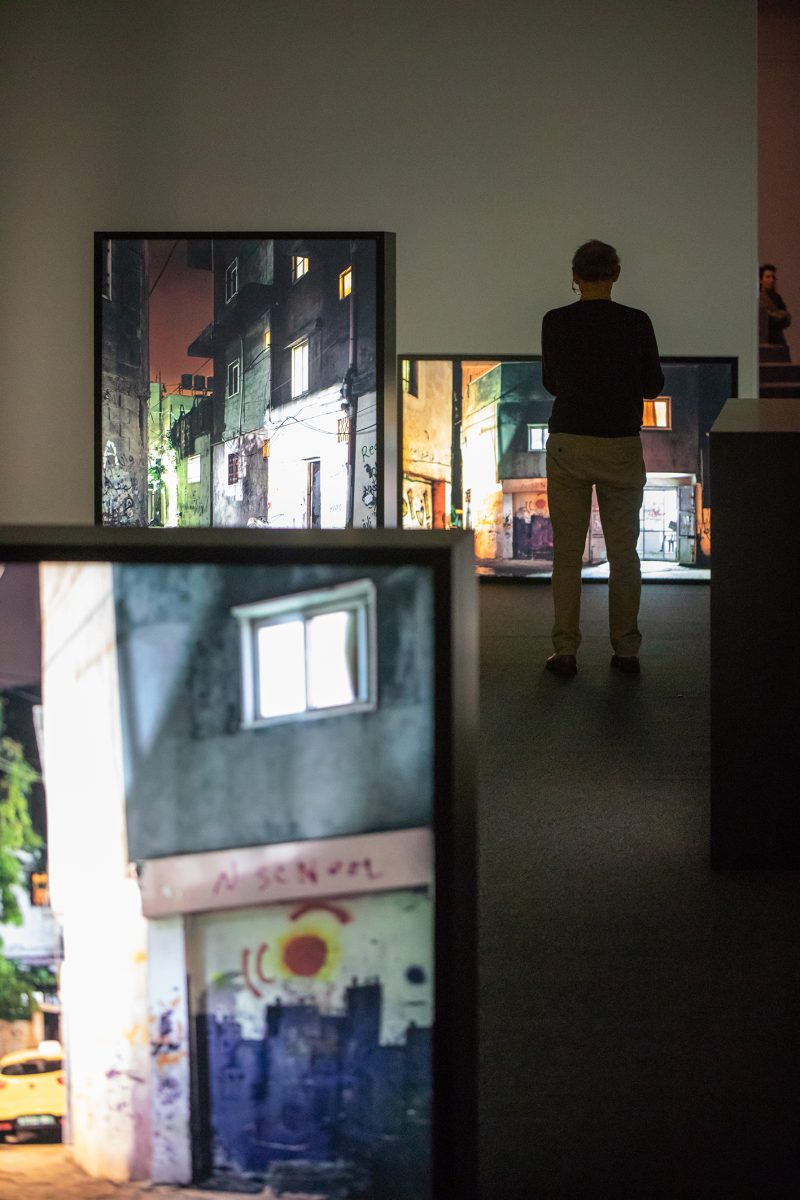Refugee Heritage (part I), 2015
8 Double sided Freestanding Light-Boxes, 90 x 180 cm
Room 5
Refugee camps are established with the intention of being demolished. As a paradigmatic representation of political failure, they are meant to have no history and no future; they are meant to be forgotten. The history of refugee camps is constantly being erased, dismissed by states, humanitarian organizations, international organizations, and even self-imposed by refugee communities in fear that any acknowledgment of the present undermines a future right of return. Yet the camp is also a place rich with stories narrated through its urban fabric. Documenting, revealing and representing refugee history beyond the narrative of suffering and displacement can serve as an attempt to imagine and practice ‘refugeeness’ beyond humanitarianism. UNESCO’s “Format for the nomination of properties for inscription on the World Heritage List (Annex 5)” is a monumental bureaucratic structure founded during a colonial era. Refugee Heritage seeks to deploy the potential for heritage to be mobilized as an agent of political transformation through making an application to UNESCO World Heritage accompanied by a photographic dossier that capture the life and richness of the camps. The end goal of the project is not UNESCO’s approval, but to start a needed conversation about the permanent temporariness of refugee camps.
Credits:
DAAR – Alessandro Petti, Sandi Hilal with Isshaq Al Barbary, Elsa Raker, Mais Musleh, Sandy Rishmawi, Husam Abusalem in consultation with Campus in Camps, Dheisheh Camp Popular Committee, Al Finiq Cultural Center, Ibdaa Cultural Center, Riwaq Center for Architectural Conservation, and Centre for Cultural Heritage Preservation in Bethlehem.
Photographic dossier: Luca Capuano



